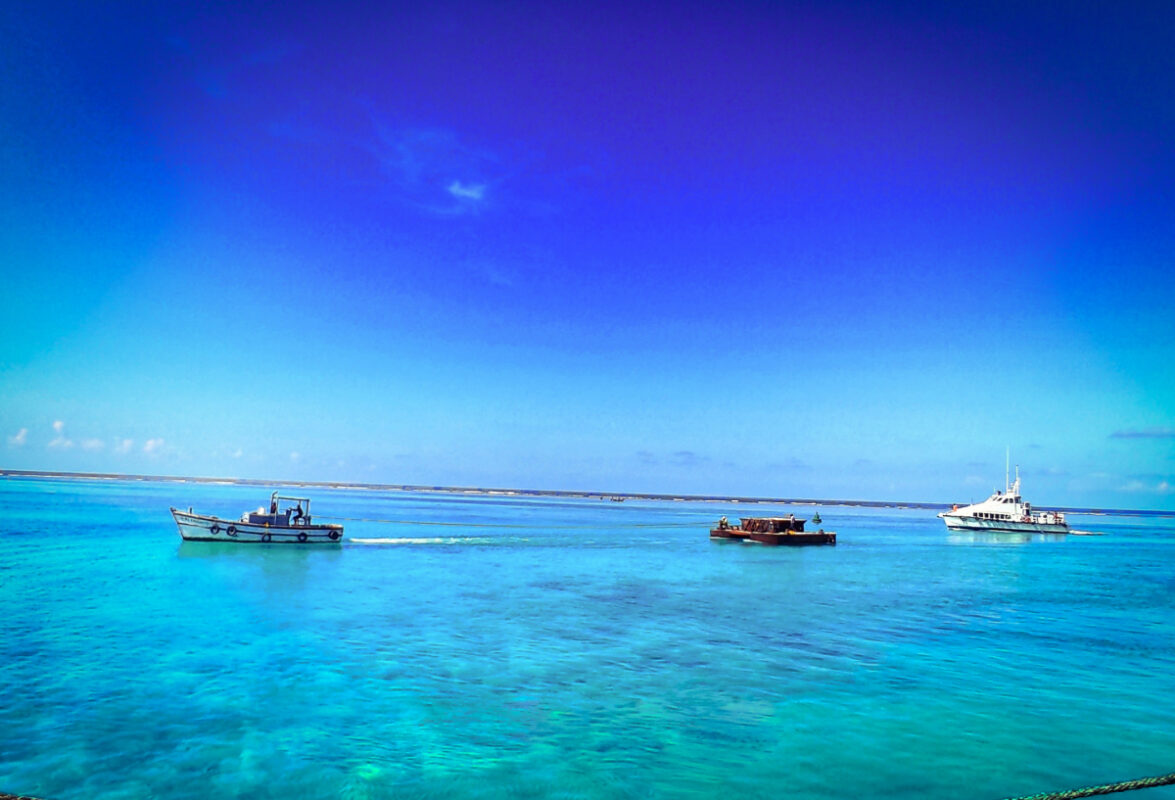Lakshadweep: In a bid to position itself as a premier global tourist destination, Lakshadweep is set to undergo a transformative journey with a series of major projects aimed at enhancing connectivity, accommodations, and overall tourism infrastructure. The archipelago, known for its breathtaking beauty, is gearing up to welcome a wave of visitors while ensuring sustainable development practices.
Enhancing Connectivity:
The administration’s initial focus on improving connectivity has garnered support from various airlines. Fly19 and Spice Jet have secured clearances for flight operations to Agatti Island, with Indigo Airlines expressing interest in joining the lineup. Fly19 is expected to commence operations by the end of this month (February,24), introducing more options for travelers to access the enchanting islands.
Airport Expansion and Greenfield Projects:
To accommodate the anticipated influx of visitors, the Agatti Island Airport is undergoing a massive expansion, with construction giant L&T at the helm of the ₹4,500 crore project. The runway extension to 2,800 meters aims to facilitate seamless travel. Additionally, plans for a Greenfield airport in Minicoy Island are in motion, strategically positioning it adjacent to the Maldives.
Though at the initial stage through the EPC route, the Agatti Airport development project also unfolds with more plans like creating an apron accommodating 4 A320s and 2 helicopters, complete with a linked taxi track and GSE Area. Further aspects include constructing an Isolation Bay, relocating the NDB, and erecting a new Terminal Building designed to handle 300 passengers, evenly split between arrivals and departures (150 each). These strategic initiatives are poised to bolster Agatti Airport’s capabilities and elevate the overall travel experience.
Upcoming Water Villas in Lakshadweep:
Tata Group’s proposal for three major Taj Resorts on Suheli, Minicoy, and Kadmat islands is set to add a touch of luxury to the archipelago. The approval for resorts on Suheli and Kadmat has been granted, with Taj Hotels and Resorts planning Lagoon Villas – a unique offering in India with over 110 rooms each. These projects undergo rigorous scrutiny, including an Environment Impact Assessment, to ensure minimal ecological impact.
Taj Suheli comprises 60 beach villas and 50 water villas, while Taj Kadmat offers 75 beach villas and 35 water villas. Set against the backdrop of Lakshadweep’s scenic beauty with exotic beaches and coral reefs, these resorts exemplify the Taj Group’s commitment to luxury hospitality. Positioned as havens for water sports, the resorts aim to provide a unique and picturesque experience for guests.
The “Development of Beach Front in Bangaram, Lakshadweep” project
With a budget of 100 INR Crores, this project aims to transform the Bangaram island into a premier beach-destination. The comprehensive plan involves architectural facelifts, landscaping, and infrastructure development to meet international standards. The beachfront will feature gateways, swimming pools, play areas, outdoor showers, signboards, swings, outdoor seating, restaurant areas, pathways, shelters, lighting, and water supply. Currently, Bangaram Island boasts a fully operational resort with 60 rooms, offering accommodation for visitors. In addition, recently constructed beachfront huts complement the existing facilities.
Smart City and ‘Tent City’ Innovations:
Beyond conventional projects, the administration is venturing into a smart city initiative and establishing city centers with five-star hotels in Agatti and Kavaratti.
Kavaratti is set to introduce a ‘Tent City’ with adaptable accommodations along the coastline, providing a unique and flexible lodging experience. The project will encompass an encumbrance-free government land with a tentative area of 1.15 hectares. While the actual location and area requirements will be finalized by the authorities, the project aims to develop and operate a minimum of 30 to 50 tourist tents along wi essential facilities such as golf carts, CCTV surveillance, security measures, medical and first aid facilities, and fire-fighting measures to ensure a safe and enjoyable experience for visitors. Additionally, the project allows for diversification into commercial activities like destination weddings, corporate functions, and a health and wellness center, enhancing the island’s appeal for various purposes. Infrastructure encompasses water and sewage treatment, roads, power distribution, and landscaping.
Balancing Development and Cultural Preservation:
Despite the enthusiasm for these initiatives, concerns are voiced by UCK Thangal, a senior politician, regarding the lack of consultation with locals in the decision-making process. He emphasizes the importance of community involvement to safeguard the cultural heritage of the islands. MP Mohammed Faizal Padippura echoes these sentiments, urging a consultative approach to ensure the public’s opinions are considered.
Eco-Friendly Construction and Potential Policy Shifts:
Highlighting their commitment to sustainable development, officials mention that nine major tourism projects will involve eco-friendly construction practices. Additionally, discussions hint at potential shifts in the prohibition policy, allowing certain areas in inhabited islands to serve liquor to tourists, aligning with the evolving tourism landscape.
India envisions projecting Lakshadweep as an alternative to the Maldives for tourists, leveraging its rich natural beauty and cultural heritage. The move comes in the wake of a diplomatic row with the Maldives, underscoring the geopolitical significance of tourism ties between the two nations.
As Lakshadweep unfolds its ambitious plans, the delicate dance between progress and cultural preservation remains a focal point. The archipelago’s journey toward becoming a global tourism hub necessitates a harmonious blend of economic development, community involvement, and environmental stewardship.

